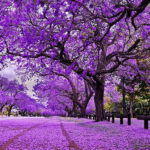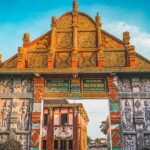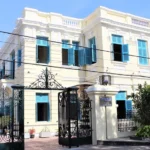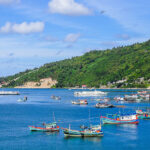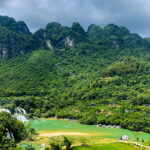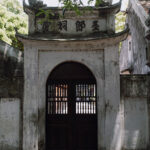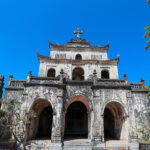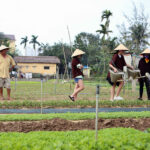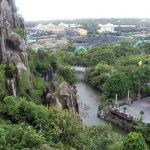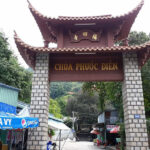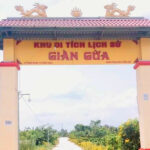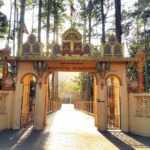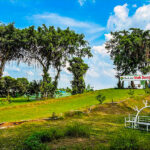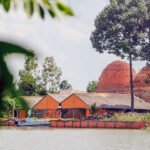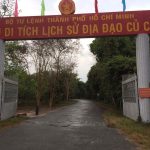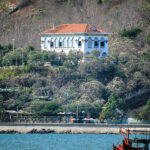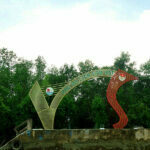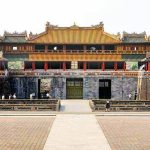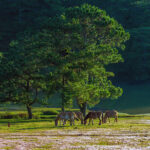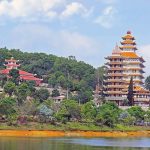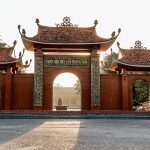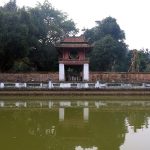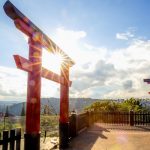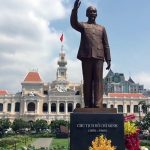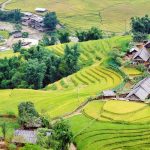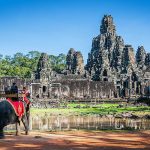Associated with the famous Quan Ho folk songs, Bac Ninh is a prominent travel destination in the Northern tourist destinations. In particular, this place is also favored by nature with countless beautiful natural landscapes and many ancient architectural works.
Table of Contents
How to get here?
Bac Ninh is nearly 40 km from Hanoi, travel time is about an hour. This is a suitable destination for cultural tourism activities on weekends. For those who live far away, you can combine Hanoi and Bac Ninh in the same trip. Transportation from Hanoi is quite convenient, you can go by motorbike, private car, taxi or bus.
Best time to explore Bac Ninh
From January to March is the festival season of Dau pagoda, Lim festival, Do temple… suitable for those who like to learn about culture and customs.

In the summer and autumn months, there are not many special things to do in Bac Ninh, but you can visit spiritual spaces, craft villages… At the end of the year, the canola flower fields along the Duong River bloom bright yellow, suitable for taking photos.
Explore Bac Ninh with the best parts
Dinh Bang Communal House and Dinh Bang village
Dinh Bang Communal House located in Dinh Bang village, Tu Son District, is very famous in the North of Vietnam. It’s construction started in 1700 and end in 1736. The house is a place of worship for three tutelary spirits: Cao Son Dai Vuong (God of land), Thuy Ba Dai Vuong (God of water), Bach Le Dai Vuong (God of harvest).

The main part of the communal house is rectangular with 20m long, 14 wide and it is divided into seven rooms. It is very imposing due to its large roof and its 60 or so ironwood pillars which range in diameter from 55 to 65 cm. The design of the components is very complex and the structure is very sturdy. There is a panel inscribed with Chinese characters that is read in Vietnamese as Bat Ma Quan Phi which mean Eight Running Horses.

To get to Dinh Bang village from Hanoi, cross the Red River on the Chuong Duong Bridge and then take National Highway 1 for 20km. Dinh Bang which is rich in sites of historical interest, is one of the 20 traditional handicraft villages of Bac Ninh. In Dinh Bang, people are experts in lacquerware. Moreover, almost everyone in the village sings quan ho folk music. People of all ages and of both genders express their feelings though lyrics that bear a deep national character.
Tieu Pagoda
The pagoda in Tuong Giang Ward, Tu Son City is a famous ancient temple of Bac Ninh province, located halfway up the mountain, surrounded by quiet trees all year round. The pagoda consists of the patriarch house, the stele house and auxiliary works.

The pagoda was a large Buddhist center during the Ly Dynasty. Currently, this place preserves many ancient documents and anecdotes reflecting the life and background of Emperor Ly Thai To.

Coming to Tieu Pagoda, visitors can also admire the mysterious and precious statue of Zen Master Nhu Tri in Vietnam. In addition, this is a rare pagoda in the North that does not have a donation box, the altars only have fruits, candies, incense, etc.
Dau Pagoda
Dau Pagoda is located in Thanh Khuong Commune, Thuan Thanh District, in the center of the typical historical and cultural relic area of the north. It was built at the beginning of the 3rd century, in a region that later became a centre for Buddhism. Visitors to Dau Pagoda not only pray for peace but also to see with their own eyes the unique architecture of the “the oldest pagoda in Vietnam”.

In Buddha’s main sanctuary, there is a large statue of the female genie Phap Van, seated on a lotus flower which is why the pagoda is also called Phap Van Pagoda.

Near the pagoda is a famous tower built in the 6th century, named Hoa Phong. This stone tower was built as a protection against evil winds. Inside the tower hangs a bronze bell and a cast gong.
Phat Tich Pagoda
Phat Tich pagoda was built between 7th and the 10th centuries by the mountainside of Phat Tich in Phat Tich Commune, Tien Son District. Under the Ly Dynasty, the pagoda underwent a large scale restoration. In 1057, Emperor Ly Thanh Tong ordered the building of a tower for valuables.

There are some ancient relics preserved in the pagoda such as a blue stone statue of Amitayus Buddha meditating on a lotus pedestal, the statue is 1.86 m high; with the pedestal, it reaches 2.69 m. On the pedestal and in the lotus petals, there are dragon and flower images, a typical feature of Ly Dynasty art. Right on the second step, there are 10 stone animal statues, crafted from monolithic sandstone, including lions, elephants, rhinoceroses, buffaloes, horses, two of each type, lying on a lotus pedestal.
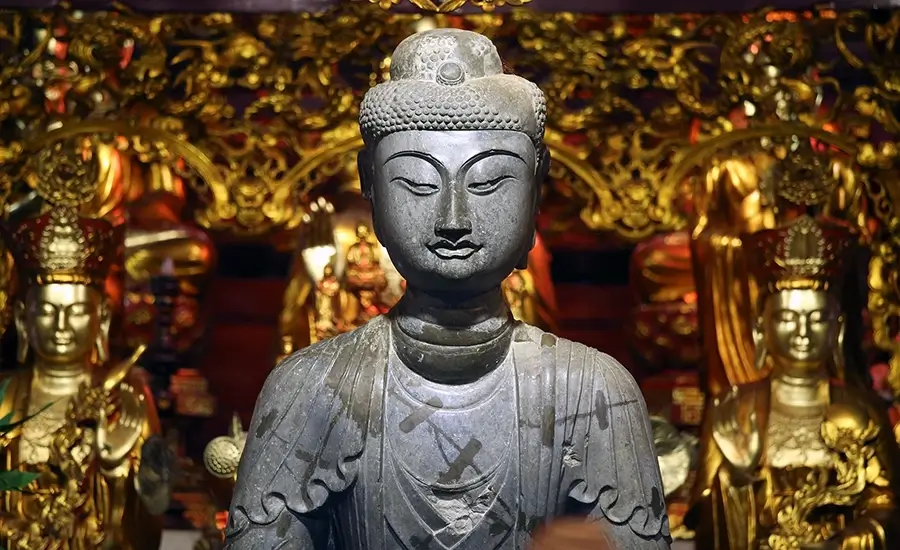
blue stone statue of Amitayus Buddha
In the pagoda, there are also other Ly Dynasty relics such as stone wall panels, fighting cocks… on which are carved images of Kim Cuong, Dharma protectors, divine birds, musicians, dancers, etc.
Cung Temple – Ngoc Well
Cung Temple is located in Viem Xa area, Hoa Long ward, Bac Ninh city (also known as Diem village). Cung Temple has been famous since ancient times, according to legend, the royal army fought along the Cau River and came here to pray and won the battle.

In the middle of Cung Temple’s yard is Ngoc Well. On hot days, after visiting and offering prayers at the Temple, visitors often do not forget to ask for drinking water from Ngoc Well. To get water, visitors must leave their shoes and sandals on the shore and walk barefoot down.

The water drawn from the well can be drunk directly without filtering or boiling, and will taste cool and naturally sweet like no other.
Do Temple
Dong temple was built during the reign of the Le King in Dinh Bang Village, Tu Son District and it has been altered several times since. The major reconstruction took place under the reign of Le Trung Hung in the 17th century. At that time, a high wall of ancient architectural style built to surround the temple.

The interior residence contains a sanctuary where the sacred throne and ancestral tablets of the eight Ly Kings are kept. It is surrounded by a 3m high, 1m wide brick wall. The outer building consists of a square chamber with eight roofs. It houses the worshipping house, the storehouse, the guesthouse and the Queen’s Temple which is dedicated to Princess Ly Chieu Hoang. A five-dragon entrance leads to the square house a paved stone path.

The outer wall is next to the brick wall at the end of the guesthouse and has four palanquins on each side. Going from the five-dragon entrance to the lakeside, visitors will see a water puppet stage with eight roofs and curved corners. By the semi-circle shaped lake is the house of stelae.
Many valuable ancient relics and important historical documents are preserved in Do Temple. In particular, there is an old stela with the writing of Phung Khac Khoan, the winner of a feudal literature contest in 1602.
Dong Ho Painting Village
Dong Ho Village is located on the banks of the Duong River in Thuan Thanh District, and has long been a part of the spiritual life of Vietnamese people with folk paintings imbued with national identity. Dong Ho paintings are not drawn based on inspiration but use wood engravings to print paintings.

To have sophisticated engravings, there must be a model painter with high technical skills. The painting must be printed on fine Do papers. Colors for painting are obtained from such natural materials as half-baked bricks and ashes of some kinds of leaves and roots.

In order to make the glittering background for Do papers, the artisan burns scallop shells to a kind of powder which is refined and mix with resin, and then the mixture is pasted on the paper sheet which will be used for painting.

Dong Ho’s painting have conventional layouts, contents, and colors. For a large part, the painting reflex wishes for peace, happiness and prosperity. Some paintings focus on animals such as cows, pigs, dogs, and cats, which are familiar with farming life of Vietnamese. Particularly, such topics as “catching coconuts”, “mice’s wedding”, and “jealousy” always attract tourists at home and abroad.

The mice’s wedding
In the past, the villagers just made paintings before Tet Holiday (Lunar New Year’s Day). Nowadays, tourist can by painting at anytime in the year.
Phu Lang Pottery Village
Phu Lang Pottery Village, Que Vo District, was recognized as a National Intangible Cultural Heritage in 2016. In Phu Lang, it is easy to see images of pottery products lining the village roads, alleys, and hamlets. In addition to household products such as jars, pots, and vats, Phu Lang pottery is also used for interior and exterior decoration…

The pottery here has brown, black, and light yellow glazes. Each finished product goes through many stages from spreading the clay, shaping, cutting, drying, firing, and assembling…

The highlight of Phu Lang pottery is the use of the embossed method in the form of carving, with natural, durable, and unique glaze colors. The shape of the pottery is rustic but strong, containing the pristine beauty of earth and fire.
But Thap Pagoda
But thap pagoda is located west of But Thap village, in Dinh To Commune, Thuan Thanh District. Thap But pagoda is one of the most famous pagodas in Vietnam.

Inside, there are various valuable ancient objects and statues which are considered to be Vietnamese masterpieces of 17th century wood carving. Among them are the They Tien Dong Do Lich Dai statue and Guanyin statue with one thousand eyes and one thousand arms, made in 1656 and symbolizing the reverence of both religion and beauty.

Specialty of Bac Ninh
Dinh Bang Phu The Cake
This is a characteristic of the North culture. Phu The Cake is wrapped in Dong leaves and boiled, not showing off its smell, but under the transparent yellow crust, the cake filling appears invitingly. In addition to green beans that are cleaned of their shells, steamed and fluffed, the maker also adds white sugar, coconut pulp, lotus seeds and five-spice powder.

The cake dough is made from sticky rice, ground with a water mill, then filtered to get the essence, pressed in a sieve and dried. When eating the cake, we will feel the stickiness of the sticky rice, the crispiness of the papaya, the richness of the green beans, the fatness of the coconut pulp, the richness of the lotus seeds, the sweetness of the sugar…, all blending together to create a very unique flavor.
Te cake in Cho Village
Te cake is a specialty of Yen Phong land. To make this type of Te cake with a characteristic flavor, the people of Cho village often choose fragrant, moderately sticky rice as the raw material.

Besides rice, the filling includes pork butt or shoulder, dried onion, seasoning powder, fish sauce, pepper… Te cake in Cho village is best eaten hot. Gently peel off the leaves with your hands, the fragrant aroma from the cake crust will spread, mixed with the refreshing aroma of Dong leaves. The crust is both soft and chewy naturally.
Nem Bui
You should not miss Nem Bui, one of the famous dishes in north region. Local people call the dish nem thinh (finely ground roasted rice). Depending on each person’s taste, when eaten, nem is rolled in fig leaves and dipped in chili sauce or fish sauce.

You will feel the astringent taste of fig leaves, the sweetness of meat and the fragrant smell of thinh. Nem Bui originates from Bui village, Ninh Xa commune, Thuan Thanh district, Bac Ninh province. After many ups and downs, in recent years Nem Bui has become more and more known to many people and has become a delicious and cheap culinary dish.
Van Village Wine
An indispensable gift when you come to Bac Ninh, the wine is brewed with delicious sticky rice, plus traditional yeast of 35 rare medicinal herbs, making the wine smooth to drink and rich in flavor.

With the list of places suggested by Vietdreamtravel.vn, you will not worry about missing the opportunity to visit famous architectural works and relics when explore Bac Ninh or spiritual places that play an important role in the formation and development of this land.
Source: collected by An
Follow us for the best deal with Vietnam package tours and visa services!





